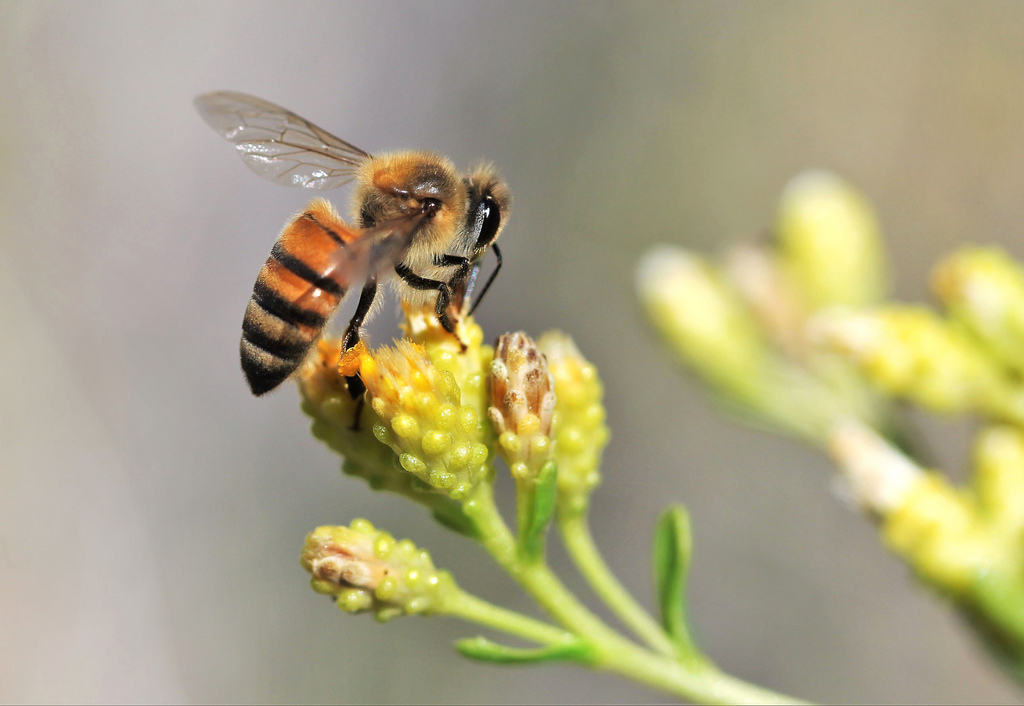
Co-authors Dr. Alexander Mikheyev of the Okinawa Institute of Science and Technology and Dr. Jay Evans from the U.S. Department of Agriculture’s Bee Research Laboratory had such great answers that we wanted to share some of them. This research was also featured in ZME Science.
Why is it important and useful to have a high-quality genome for Varroa species? Is there any combined value with the recently published bee genome?
Dr. Mikheyev: Understanding the mechanisms of parasitism requires detailed information about the organization of the genome. Many recent ideas for fighting Varroa rely on molecular tools, which in turn rely on genomic data. Furthermore, a good genome enables us to understand the coevolutionary interactions between mites and the bees. For now, our studies are focused on understanding how the mite has evolved to become a better parasite. However, my lab is also looking at the bee side of the coevolutionary interaction. Having high-quality genomes for both will allow us to identify genomic regions and genes involved in coevolution.
Why did you choose to use Hi-C? Why did you need chromosomes for your genome assembly?
Dr. Evans: From prior genome efforts, we had no information on the physical positions of mite gene features. Now with these in place, we can leverage synteny information from other arthropod genomes and narrow searches for some hard-to-find proteins like olfactory receptors, which often occur in clusters. Generally, the improved genome helps us know what might be unique to Varroa — and therefore a novel clue into their biology and control.
Dr. Mikheyev: One element of this study was to look at patterns of gene duplication, which could indicate diversification of particular gene families. Having a contiguous genome allows us to better localize these duplications and confirm that the different copies are homologous. In the future, when we’ll be looking at signatures of selection, a really powerful approach is to identify genomic regions with reduced genetic diversity. Having adequate chromosomal scaffolding will be essential there.
What genomic clues were found in the two Varroa species that may contribute to parasitism?
Dr. Evans: We found a clear set of genes for the proteins — olfactory receptors and others — that these mites must be using to react to their bee hosts. Hopefully, knowing these proteins will lead to smarter controls and insights into why each species maintains a specific host preference.
Dr. Mikheyev: For us, the most striking finding is this: The evolutionary trajectories of both mites, despite their similarities and close relatedness, were completely dissimilar. At this stage, it is still a bit hard to tell specifically what the selective pressures were and what the mites are adapting to. Curiously, in both species, genes involved in stress tolerance and detoxification were already under selection. This most likely happened before they ever faced miticides and suggests that they may have pre-adapted strategies for dealing with our chemical warfare strategies against them. We hope to tackle this in an upcoming study looking at population-level differences between mites adapted to original and novel hosts.
How do you hope these genomes will be used to help save honey bees?
Dr. Evans: Prior genome drafts had enough gaps that we missed candidate proteins for mite control. These mite genomes will lead to focused efforts to target pathways or traits not found in bees by techniques like small molecules, biological controls, and RNA interference.
Dr. Mikheyev: They can be used to develop new strategies for Varroa control. Also, in upcoming studies looking at how mite populations are adapted to original vs. switched hosts, we hope to identify genes and genomic regions that are specifically important in host switches.
Is there any genomic evidence that the western honeybee could be developing resistance to these pests?
Dr. Evans: Yes. Some bee breeders are targeting these traits, from behaviors to virus resistance. A recent, improved assembly of the honey bee genome — aided in part by Hi-C sequencing — is being used for trait identification and marker-assisted breeding right now.
Dr. Mikheyev: They most definitely are. Intriguingly, wild populations of honey bees seem to evolve tolerance to the mites relatively quickly. In one of my favorite studies, a USDA-monitored population in Louisiana first saw high mortality upon the arrival of Varroa, but a few years later colonies lived even longer than before. There are resistant populations known in the U.S. and in Europe, and resistance is a trait that can be selected. How this adaptation takes place in the bee is really interesting, and something we’ll continue to look into.
Isolating Varroa mites from bees involves a creative use of powdered sugar. How do you think this technique came about?
Dr. Mikheyev: We don’t know. The papers describing this method are pretty prosaic. It seems that in the late 1980s, wheat flour was used to control Varroa by knocking them off the bees — and eventually, someone tried sugar.
Dr. Evans: Since they’re attached to their bee hosts, researchers have used a variety of ‘irritants’ to get mites to fall off. Powdered sugar is safe for the bees and might even be an extra calorie boost. The bees pull sugar from each other and the mites fall off — mostly because of the sugar itself, but also because the grooming bees find them.
What is your favorite weird food that involves honey?
Dr. Mikheyev: It’s not really a food since it is honey, but I love the fact that the giant honey bees of Nepal make psychedelic honey from Rhododendron flowers. The story is worth tracking down for no other reason than the dramatic photos of the men that harvest this honey from sheer cliffs.
Dr. Evans: Honey lemonade. Sorry, I am required by my kids to not say weird things.
